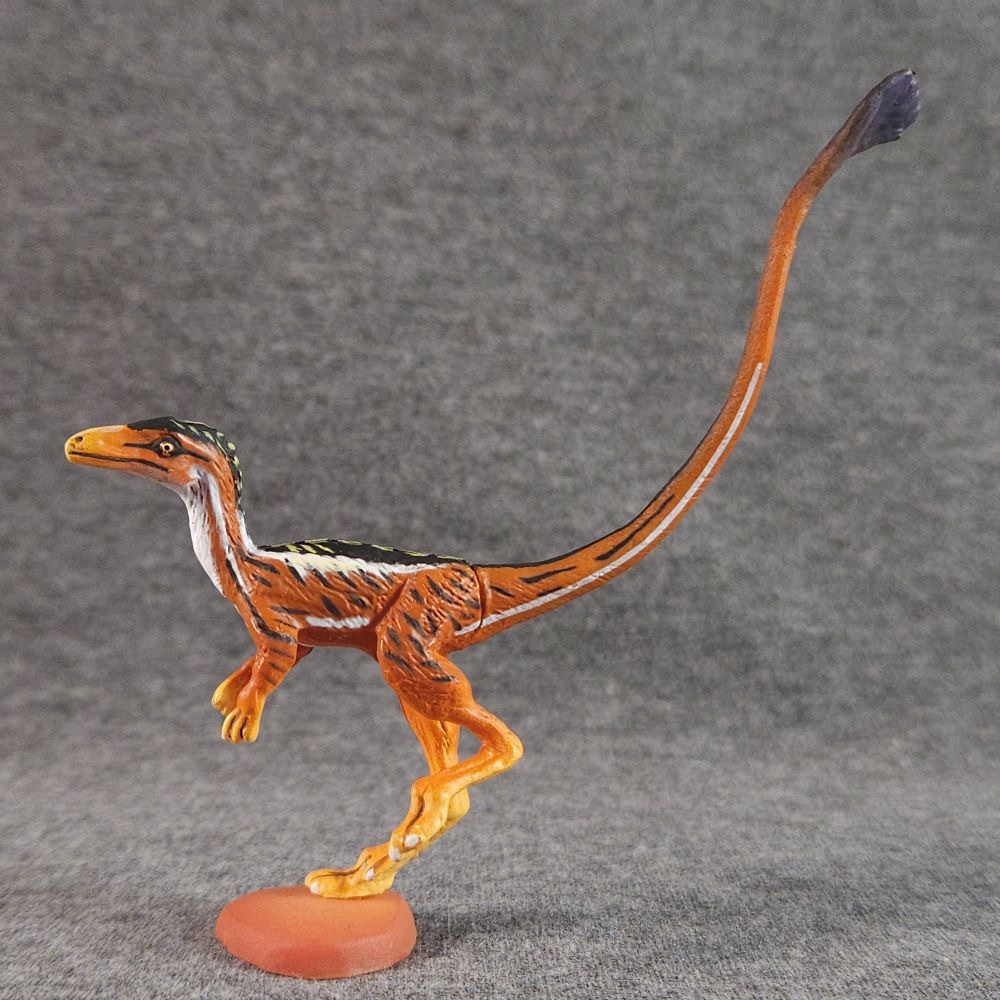
It’s been over ten years since fellow reviewer Gwangi covered a figurine of Sinosauropteryx, a small compsognathid theropod, produced by Kaiyodo under their renowned Dinotales series. Since that time, a grand total of… two, maybe three more figurines… have been produced of this seminal genus. Originally discovered in 1996, the “Chinese lizard wing” was the first, clearly non-avian, dinosaur fossil to bear striking evidence of feathered integument. The discovery was momentous, and heralded many more discoveries of feathered dinosaurs, forever changing the world’s perception of the “terrible lizards”. That so few collectibles of this animal to exist after two and a half decades feels like a travesty!

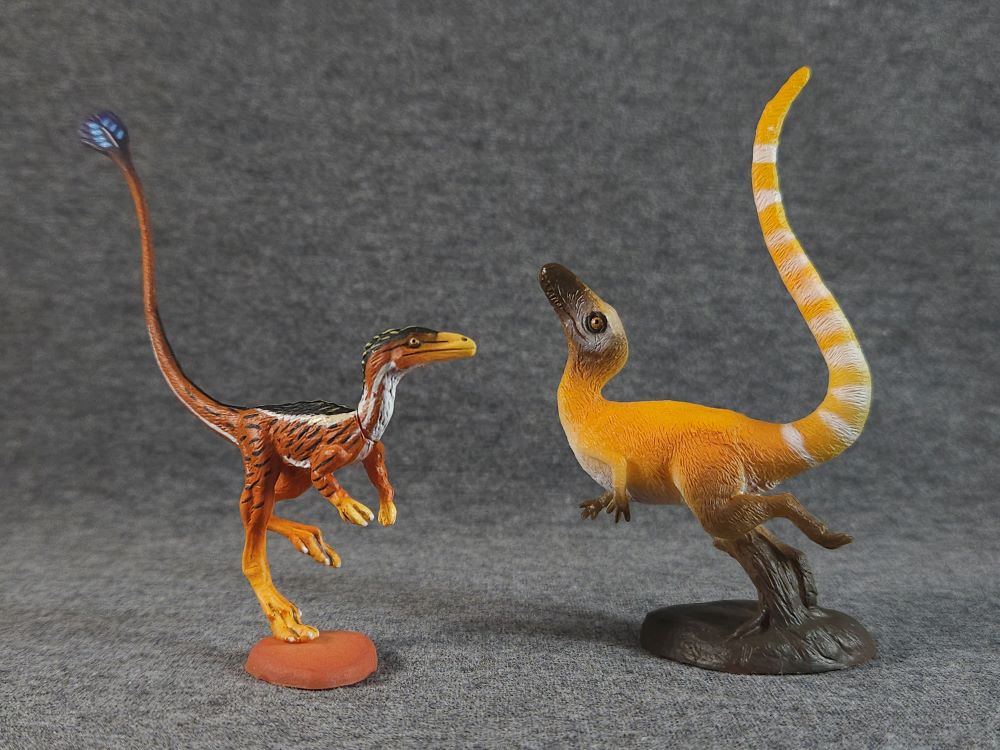
Kaiyodo was the first company to release a toy of Sinosauropteryx, as part of their UHA Dinotales series. The first few Dinotales sets ran under the sub-moniker “Chocolosaurs”, and were sold with small sweets. A total of 24 unique minifigures were included in the first Dinotales set in 2001, featuring an impressive diversity of prehistoric life. A limited repainted set released in the same year, not only updating the coloration of the figures but also the assembly, refining the figurines for more seamless results. Sinosauropteryx was no. 010 of the set; like all of the Dinotales figurines, a tiny sheet of scientific information and assembly instruction was included. While the original Sinosauropteryx release was assembled via the limbs, the version B figurine is separated into lateral body halves and a tail, which fits in between the halves. The result of this new construction renders the segmentation almost invisible, although assembly should of course be handled with care. A small base is also included to insert the left foot for support.

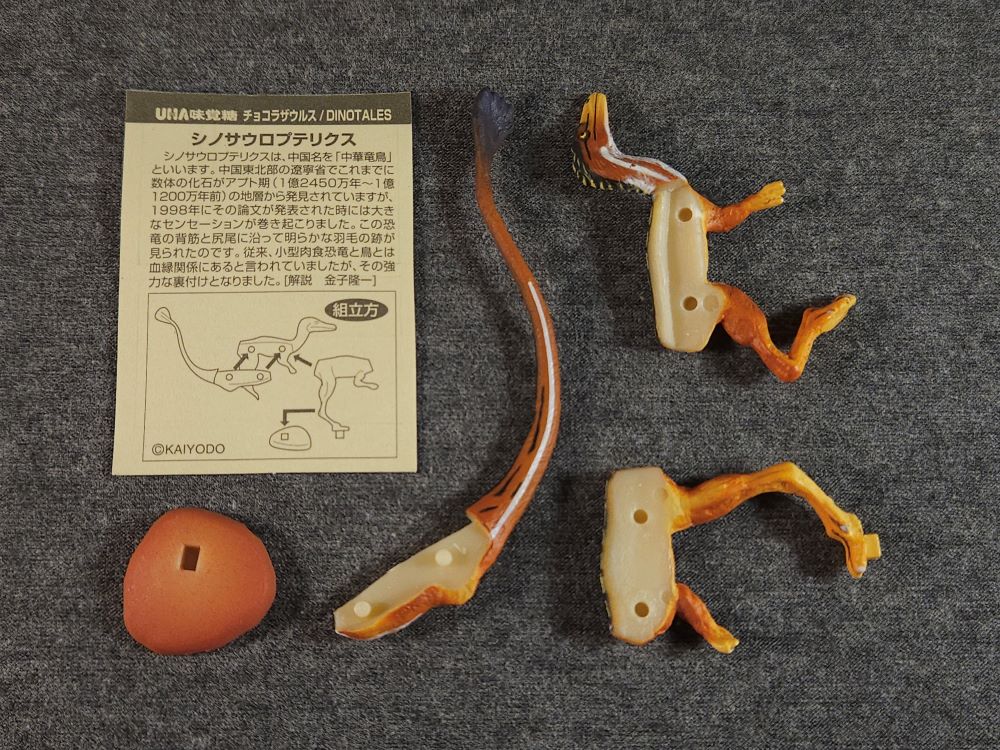
Measured nose to tail, the Dinotales Sinosauropteryx stretches 11 cm (4.25 in) in length – about 1:9 scale to a 1-meter-long life specimen. The figurine balances on one foot attached to a base, posed mid-step in a dainty hop or skip. The head is held high and alert, with the tail raised even higher, perhaps alluding to the iconic death pose the original fossil was preserved in. For a living animal, though, the dramatic posture could possibly be interpreted as signaling to another of its species in warning of danger, or posturing to attract the opposite gender. The animal is lean and limber, but not scrawny – and of course a fine coat of light feathers covers most of the body.
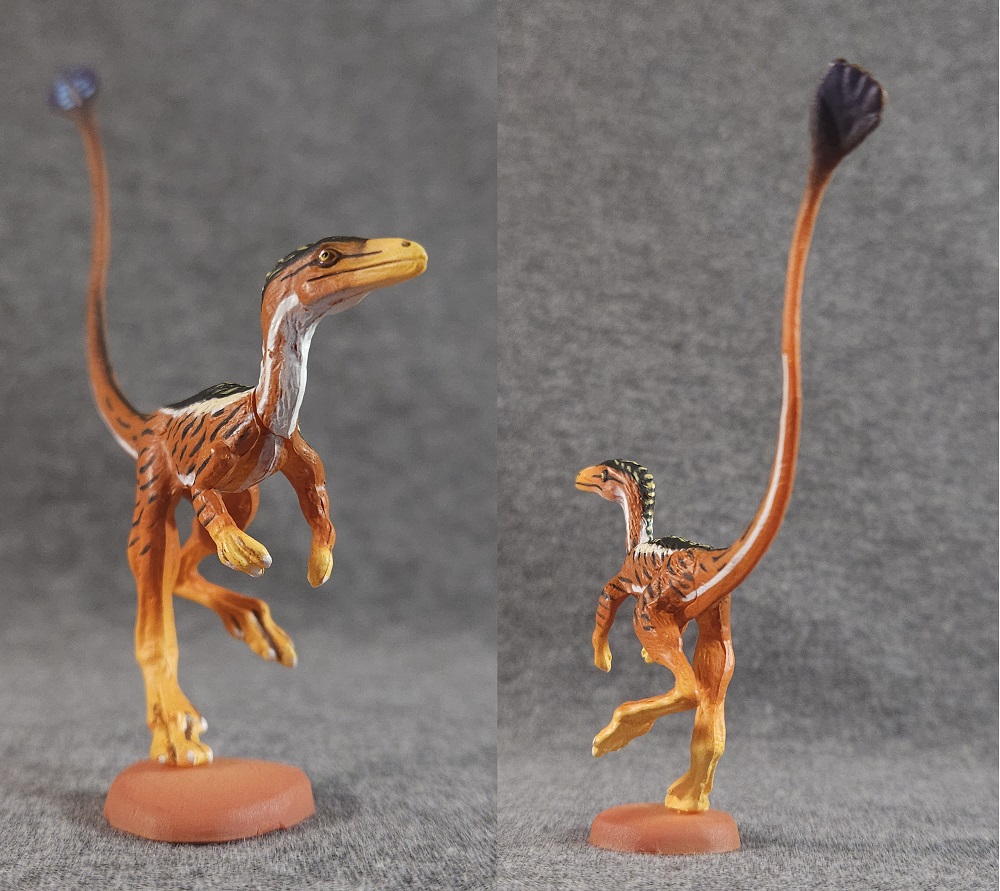
The secondary color variants of the Dinotales 1 figurines range from subtle to drastic in their changes. Sinosauropteryx gets one of the more noticeable overhauls in coloration, trading the soft pinks and baby-chick yellows for a ruddy orange, broken up by black and white stripes and streaks. The patterns run mostly laterally, from the head down to the body and along the tail, sometimes transitioning between black or white. Additional dotted yellow stripes interrupt the black patches on the head and back; the scaled snout, hands and feet also transition from orange to a solid yellow, and the bright eyes are painted in the same hue with precision. This four-color paint scheme is reminiscent of certain ground and water birds, as well as small lizards like skinks; it’s easy to imagine this chicken-sized theropod sneaking through the dense undergrowth, stalking its prey and swiftly darting in and out of sight. That such a neat and attractive color scheme was achieved on such a small figurine (for a low cost at the time) is commendable; nostrils, mouth lines, and even separate digits and claws are also carefully marked. One final touch is a small fan of blue highlighted feathers at the tip of the lengthy tail.
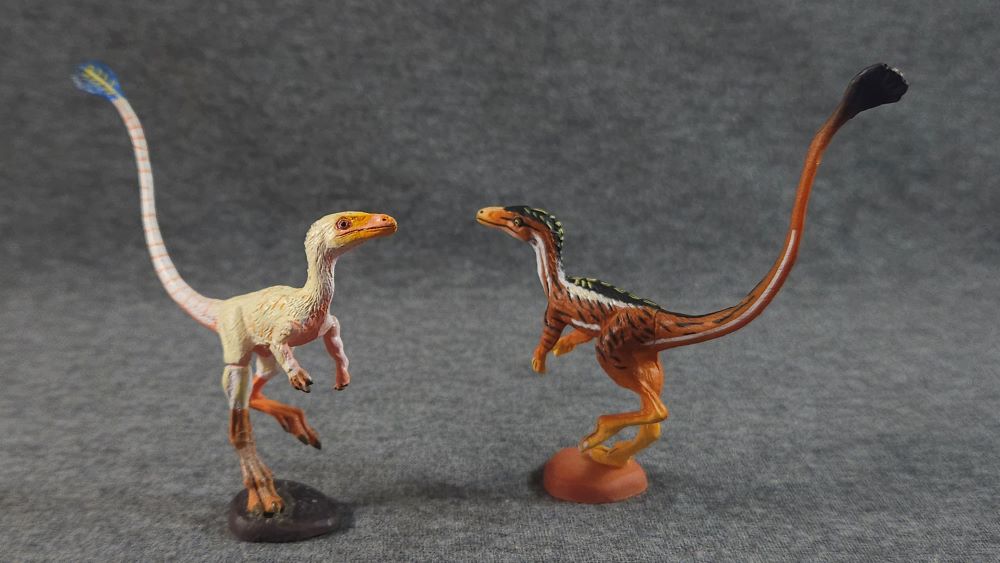
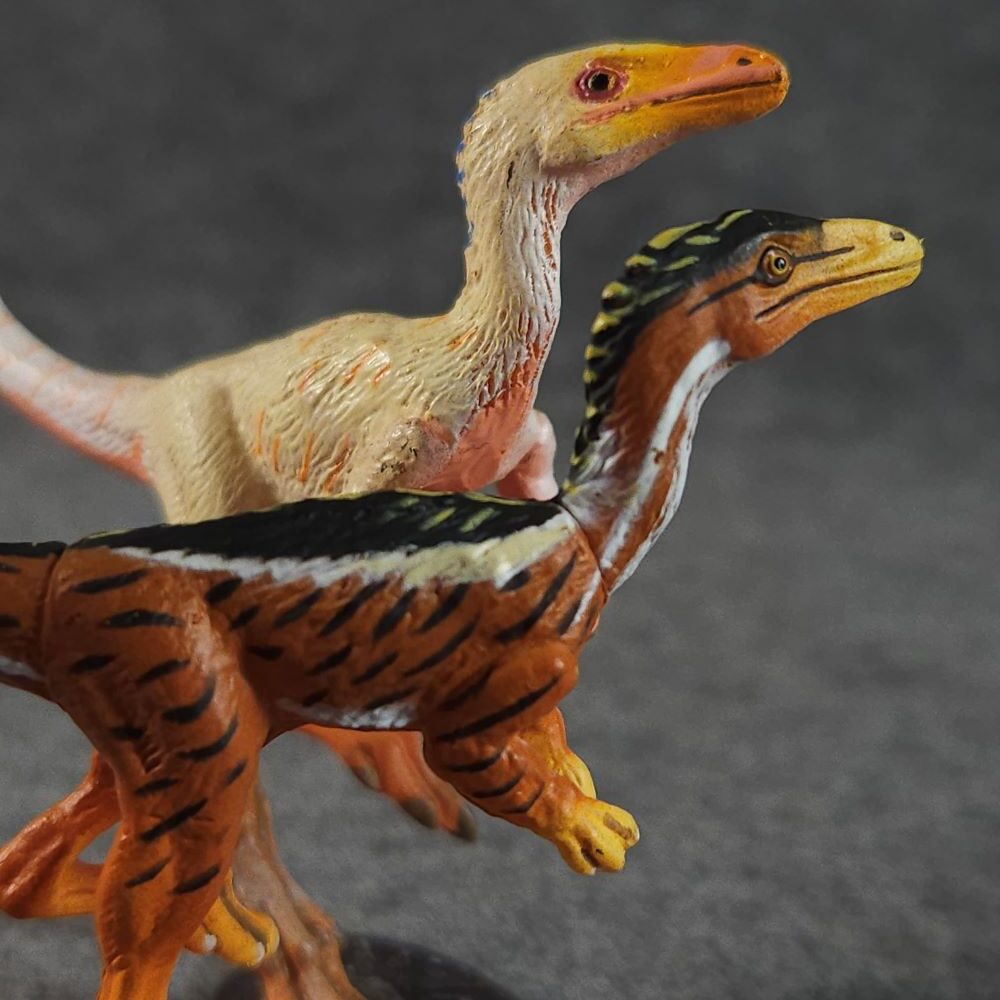
Interestingly, Kaiyodo’s choice of colors for this second figure variant isn’t entirely far off from the real thing. A year after the toy was released, a presentation to the Society of Vertebrate Paleontology by Nick Longrich suggested there were remnants of pigment preserved in the fossils of Sinosauropteryx; in 2010, a paper published in Nature magazine further supported the existence of melanosomes in the fossils, and scientists were able to determine the actual patterns and coloration of the dinosaur’s plumage. Similar to Kaiyodo’s rendition, Sinosauropteryx was predominantly a reddish-brown coloration, with prominent white markings; however, this consisted of thick banding on the tail and countershading to the stomach and face. No evidence of a tail fan exists, but the plumage along the tail likely gave more volume to the animal’s body. Rather than a skink or grouse, Sinosauropteryx probably looked like the saurian equivalent of a red panda. Kaiyodo couldn’t have anticipated this, of course, so any inaccuracies in the figure’s colors are perfectly reasonable, and surprisingly close to the mark for a speculative color pattern at a time when evidence had yet to be properly examined.

The Dinotales series was a remarkable run of toy dinosaurs and prehistoric animals, one which was largely unprecedented for its variety and attentiveness to scientific accuracy. While Sinosauropteryx is inevitably showing its age after 20+ years, for its time the figurine represents a cutting-edge reconstruction of a dinosaur that was one of the greatest paleontological discoveries at the turn of the century. The Dinotales figurines are long out of production, but can frequently be found on eBay, Mercari, and similar second-hand shopping websites. They’re well worth the search.

Disclaimer: links to Ebay and Amazon on the DinoToyBlog are affiliate links, so we make a small commission if you use them. Thanks for supporting us!
Trending Products











